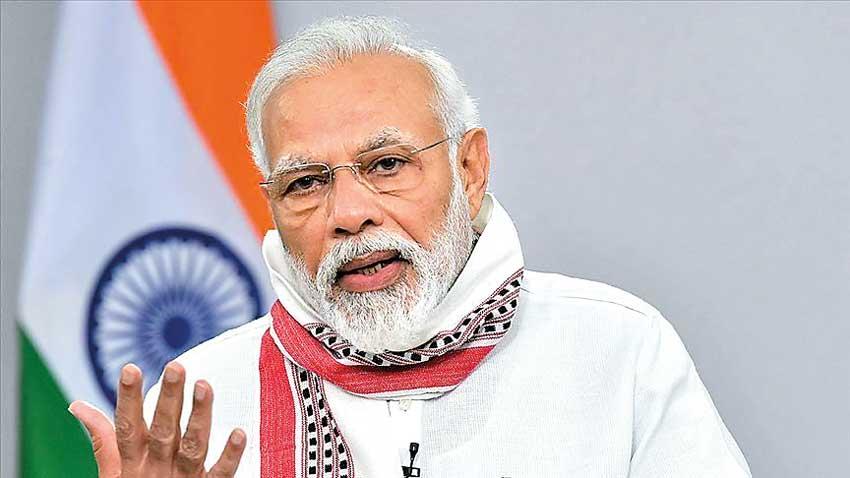Reply To:
Name - Reply Comment

Narendra Modi
The absence of a cohesive policy regardless of the change of governments has made matters worse.
India persists with its interests in a stake of a company managing the ECT
It is not yet clear how India- Sri Lanka relations will play out in the future after the spat involving the ECT
 The Government has articulated over and again that its foreign policy will be neutral and non-aligned. However, it is now challenging for the regime to be true to such a policy since the major powers with interests in the region have made it almost unworkable in a practical sense. The absence of a cohesive policy regardless of the change of governments has made matters worse.
The Government has articulated over and again that its foreign policy will be neutral and non-aligned. However, it is now challenging for the regime to be true to such a policy since the major powers with interests in the region have made it almost unworkable in a practical sense. The absence of a cohesive policy regardless of the change of governments has made matters worse.
The previous Yahapalana Government signed a Memorandum of Understanding (MoU) with India and Japan to lease out the East Container Terminal of the Colombo Port to a terminal management company to be registered in Sri Lanka. The original MoU says the company will retain 51 percent of the stake and the rest by the nominees of the Indian and Japanese Governments. A loan was to be raised from Japan to develop it.
After some modification of the MoU, the present Government planned to develop the terminal as an investment project that has 51% ownership by the state-owned Sri Lanka Ports Authority (SLPA) and the remaining 49% as an investment by India’s Adani Group and other stakeholders. But, the trade unions, backed by politically influential members of the Buddhist clergy and some ruling party allies, built pressure on the government against the move, finally prompting it to renege from the 2019 MoU. It resulted in diplomatic relations with India and Japan hitting a new low. India persists with its interests in a stake of a company managing the ECT, and it is yet to spell out its stand on the proposal by Sri Lanka to develop the West Container Terminal as an alternative to the ECT project.
Obviously, geopolitical interests have driven India to stake a claim here since it is concerned about the Chinese presence in the region. It is not yet clear how India- Sri Lanka relations will play out in the future after the spat involving the ECT. Bilateral relations have always been marred by irritants. Given the past aberrations, it is natural for Sri Lankans to suspect any tough action or arm-twisting by India.
No matter what, the timing of his address and the tone and tenor of the language lead people to think that India will toughen its position on Sri Lanka
Indian Prime Minister Narendra Modi, in his address to a recent rally in Chennai, made emphatic reference to the rights of Sri Lankan Tamils only at a time when Sri Lankans were harbouring such thoughts. It is no departure from India’s long standing position in this regard. But, it looks more vocal this time. Probably, he, as a politician would have made it for the consumption of Chennai Tamil audience. Extracts of his remarks were circulated among the local press by the Indian High Commission in Colombo.
He said, “Our Government has always taken care of the welfare and aspirations of our Tamil brothers and sisters in Sri Lanka. It is my honour to have been the only Indian PM to visit Jaffna. Through development works we are ensuring welfare of Sri Lanka’s Tamil community. The resources given by our Government for Tamils have been much more than in the past. The projects include: Fifty thousand houses for displaced Tamils in North-Eastern Sri Lanka. Four thousand houses in the plantation areas. On the health side, we financed a free ambulance service which is widely used by the Tamil community. A hospital has been built in Dickoya. To boost connectivity, the railway network to Jaffna and to Mannar is being re-built .Flights have been established from Chennai to Jaffna. I feel happy to share that India has built the Jaffna Cultural Centre which we hope to open soon. The issue of Tamil rights has also been taken up by us consistently with Sri Lankan leaders. We are always committed to ensuring that they live with equality, justice, peace and dignity,”
No matter what, the timing of his address and the tone and tenor of the language lead people to think that India will toughen its position on Sri Lanka due to the rift involving the ECT. This has happened at a time when Sri Lanka looks to India for help at the upcoming session of the United Nations Human Rights Council (UNHRC). India is opposed to country-specific resolutions by the UNHRC in principle. If it sticks to the principle, it cannot go against Sri Lanka at this time. However, India, once, deviated from its position and voted against Sri Lanka in 2012. And that happened due to internal pressure from Tamil Nadu. India has not yet informed of its actual position as a UNHRC member state this time. It seems to be taking into account the sentiments of Tamil Nadu this time around.
But, geopolitical landscape has now changed. Sri Lanka is also a country that it cannot afford to lose. Sri Lanka is its closest maritime neighbour. From a strategic security perspective, Sri Lanka is so crucial for India. Also, India will fear Sri Lanka being drawn into the sphere of Chinese influence. The future of bilateral relations will be shaped by such overall considerations, not solely by the row over the ECT. Bilateral relations have, in fact, progressed despite aberrations in the past.
India has also done a lot as part of its diplomacy to build a reservoir of goodwill among people. It took some specific measures to reach out to the Sinhalese, a move seen as an attempt to belie the notion that it is only concerned about the wellbeing of Tamils in the north and the east.
In an interview with Daily Mirror, Indian High Commissioner Gopal Baglay, once said that the notion that India helps only the Tamils does not gel with reality.
“Again, this perception does not gel with reality. India’s development projects in Sri Lanka, worth over US$ 3.5 billion in grants and others on very concessional credit, covers all provinces of the country, namely the Northern, North-Central, North-Western, Western, Southern, Central, Uva, Sabragamuva and Eastern Provinces.
I mentioned earlier some examples of this geographical spread, including the 1990 ambulance service. To give a few more examples, the Ruhuna University Auditorium—which I am told is currently the largest auditorium in any University in Sri Lanka, the Craft village in Hambantota has been completed. Other projects like the Ven. Sobitha Thera Village in Anuradhapura, the Tri-lingual School in Polonnaruwa, the Kandy Dance School are at different stages of implementation,” he answered in response to the question in this regard.
However, the emphasis on matters that cast doubts in the minds of local people will blunt the effects of such measures, undoubtedly.
Sri Lanka, as a country, has faced such problems due to the absence of a clear-cut policy. Instead of following such a policy, apportioning of projects to please one over the other had virtually been the norm. A coherent approach is needed for Sri Lanka to take decisions in conformity with its rights as a sovereign nation.
India’s objection to the wind projects to be executed by a Chinese company in the islands off Jaffna and China’s counter response to it is also result of Sri Lanka being unable to take a coherent policy.